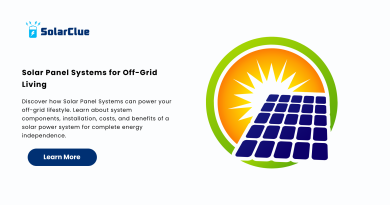How Many 300W Solar Panels Do You Need for a 4kW Off-Grid Inverter?
When planning an off-grid solar installation, the first question most homeowners ask is: How Many 300W Solar Panels Do You Need for a 4kW Off-Grid Inverter? This guide walks you through the detailed calculation, benefits, and insights to help you build an efficient solar power system for your needs.
Table of Contents
- 1 Understanding Your Energy Needs
- 2 The Math: Number of Panels Required
- 3 Factors That Influence Panel Requirement
- 4 Why 300W Panels Are a Smart Choice
- 5 Benefits of a 4kW Off-Grid Solar System
- 6 Choosing the Best Solar Panel for Home Use
- 7 Solar Panel Efficiency Explained
- 8 Enhancing System Performance
- 9 Common Mistakes to Avoid
- 10 Solar Panel Installation Tips
- 11 Long-Term Solar Power System Planning
- 12 Conclusion
- 13 FAQs
Understanding Your Energy Needs

Before diving into the math, it’s essential to understand what a 4 kW off-grid inverter means. A 4 kW inverter can handle a maximum load of 4000 watts at any given moment. To supply this much power sustainably using solar energy, you need a system that can not only meet peak loads but also store excess power for later use.
The Math: Number of Panels Required
To determine the number of 300W solar panels needed:
Step 1: Basic Power Requirement
- 4000W (4 kW) / 300W (per panel) = 13.33 panels
You’ll need at least 14 solar panels rated at 300W to meet the 4kW requirement.
Step 2: Real-World Adjustments
However, solar panel efficiency is rarely 100%. Dust, shading, weather, and system losses (inverter loss, cable loss) mean you’ll want at least 10-20% extra capacity.
- 14 panels x 1.2 (20% buffer) = 16.8 → Round up to 17 panels
Minimum number of 300W solar panels required: 17 panels
Factors That Influence Panel Requirement
Sunlight Hours
More sunlight means fewer panels needed. India typically gets 4-6 hours of effective sunlight daily.
Battery Storage
To go fully off-grid, you need batteries that can store excess solar power for nighttime use.
Location and Tilt Angle
Panel orientation and geographic location affect how much solar energy your system captures.
Why 300W Panels Are a Smart Choice
Versatility and Availability
300W solar panels strike a balance between size, cost, and efficiency, making them ideal for most homes.
Compatibility
These panels are widely compatible with various solar power systems and inverters.
Cost Efficiency
Bulk purchases or large installations often come with discounted rates, making 300W panels highly cost-effective.
Benefits of a 4kW Off-Grid Solar System
Independence from the Grid
With your own solar power system, you no longer rely on external electricity sources.
Reduced Electricity Bills
Even if used in a hybrid setting, a 4kW system significantly slashes monthly bills.
Environmental Impact
Using solar energy reduces your carbon footprint and promotes sustainable living.
Choosing the Best Solar Panel for Home Use
When looking for the best solar panel, consider:
- Efficiency Rating
- Warranty Period
- Brand Reputation
Visit SolarClue.com for expert recommendations on the best solar panel for home.
Solar Panel Efficiency Explained
Solar panel efficiency refers to how much sunlight is converted into usable electricity. Higher efficiency means fewer panels are needed.
Typical ranges:
- Monocrystalline: 18%–22%
- Polycrystalline: 15%–17%
Enhancing System Performance
Use MPPT Charge Controllers
These maximize the power extracted from your panels.
Regular Maintenance
Cleaning panels regularly ensures optimal performance.
Common Mistakes to Avoid
Underestimating Energy Needs
Always add a buffer when sizing your system.
Ignoring Panel Orientation
South-facing panels (in India) yield the best results.
Skipping Professional Help
Consult certified professionals for installation and system design.
Solar Panel Installation Tips
- Keep panels angled at 15°–30° for maximum exposure.
- Install on a sturdy rooftop or solar stand.
- Ensure proper ventilation around batteries and inverter.
Long-Term Solar Power System Planning
Scale Up As Needed
Start small and expand your solar power system as budget allows.
Monitor System Performance
Use IoT or smart apps to track system efficiency in real time.
Conclusion
Now you got the answer of “How Many 300W Solar Panels Do You Need for a 4kW Off-Grid Inverter?” To power a 4 kW off-grid inverter, you’ll need a minimum of 17 solar panels rated at 300W each. This setup offers the best balance of affordability, efficiency, and independence. As more people turn to solar energy, having a well-designed solar panel setup becomes essential for both sustainability and savings. For more expert guidance and the best solar panel options, check out blog.solarclue.com.
Ready to harness the sun? Visit SolarClue.com and start your solar journey today—it’s time to take control of your power!
FAQs
1. Can I use fewer panels if I get higher-wattage ones?
Yes, using 400W or 500W panels will reduce the number needed, but ensure your inverter supports the voltage and current.
2. What’s the average cost of a 4kW off-grid solar system in India?
It ranges from ₹2.5–₹4 lakhs depending on panel type, battery size, and installation.
3. Is 4kW enough for a full house?
Yes, for a small to medium home, especially with energy-efficient appliances.
4. How long do 300W solar panels last?
Most come with a 25-year performance warranty.
5. Are government subsidies available for off-grid systems?
Yes, but they are usually higher for grid-tied systems. Always check the latest state-specific policies.




